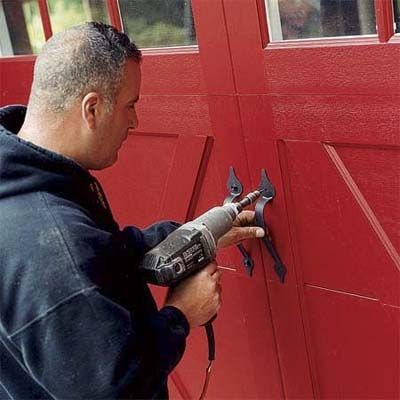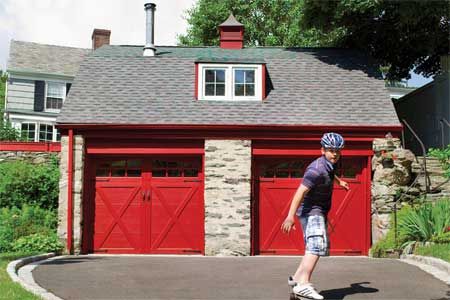Carriage-style garage doors offer a perfect blend of classic charm and modern convenience. These doors evoke the look of traditional swing-out carriage house doors while functioning as contemporary overhead doors. This guide walks through the typical process of installing carriage-style garage doors and offers tips for long-term maintenance.
Carriage-Style Garage Door Project Overview
True carriage doors, the kind that actually swing open on hinges, are expensive, custom-made items that few people consider practical these days. But you can still get that old-world look with the convenience of a modern overhead door by upgrading to a carriage-look door, like the one from Clopay’s Coachman Collection that we installed for this guide.
Each door has four foam-filled steel sections that slide up and down on tracks. The applied rails, stiles, and braces are made of a rot-resistant composite. To complete the look, we added black steel handles and faux strap hinges.
Professionals should install these doors. Each panel weighs over 100 pounds, and the springs can pop loose unexpectedly with dangerous results. Here is an overview of the basic steps my crew and I took on installation day.
Step-by-Step Carriage-Style Garage Doors Installation Guide
Here’s a breakdown of the steps involved with installing carriage-style garage doors. You’ll only need a few simple tools you likely already have in your garage.
 Impact driver
Impact driver Locking pliers
Locking pliers Ratchet wrench
Ratchet wrench Ladder
Ladder
Step 1: Remove Old Garage Door
We begin by disconnecting the old door’s springs. Since they are under high tension, we handle them with extreme care to avoid injury. Next, we systematically remove the door sections, working methodically to make sure each part is taken down safely. Finally, we detach the tracks from the garage frame, verifying that all components are removed properly.
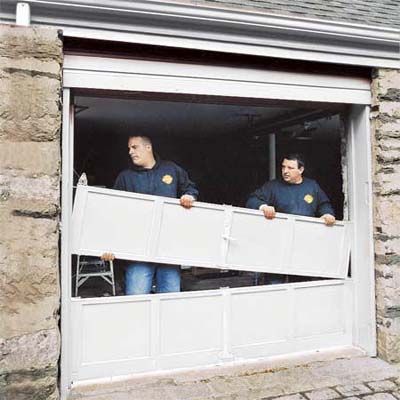
Step 2: Align the Vertical Tracks
Attach hinges and rollers to the top corners of all door sections. Once the top sections are prepared, we center the bottom section in the opening, brace it upright, and use shims to level it perfectly, which is crucial to avoid any future operational issues. Next, we slip the vertical tracks over the rollers and loosely attach their brackets to the door jamb.
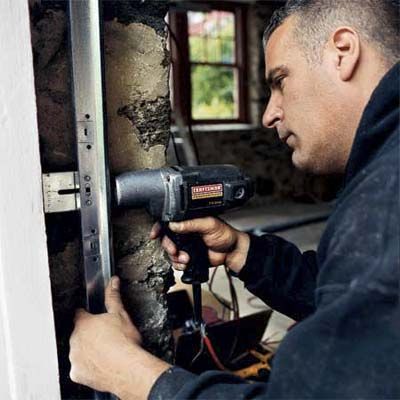
To make sure everything is properly aligned, we use a level and plumb bob, ensuring the vertical tracks are perfectly positioned before securely tightening the brackets. Finally, we carefully check the alignment to confirm that the door operates smoothly and without any problems.
Step 3: Stack the Door Sections
With the vertical tracks in place, we start by stacking the door sections with precision and care for proper alignment and function. We guide the rollers of the second section into the vertical tracks and rest it on top of the first section, then secure the sections together using hinge leaves, making sure everything aligns accurately.
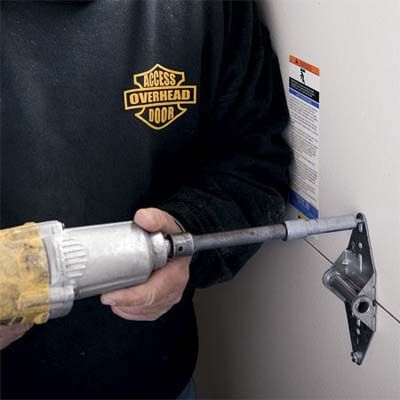
We repeat this process with the third section and, if applicable, the fourth section. We temporarily leave the top door section off to facilitate the installation of the upper tracks and spring system. Each section must be level and properly aligned with the others to achieve smooth operation and a tight seal when closed. This method prevents unnecessary strain or imbalance and guarantees the door functions correctly.
Step 4: Attach the Upper Tracks
We start by loosely bolting the curved ends of the upper tracks to the tops of the vertical tracks. To hold the opposite ends of the upper tracks level, we use ladders or ropes. We then lag-screw the brackets on the curved ends to the door jambs for stability and loosely bolt the supported ends of the tracks to metal hangers secured to the garage ceiling.
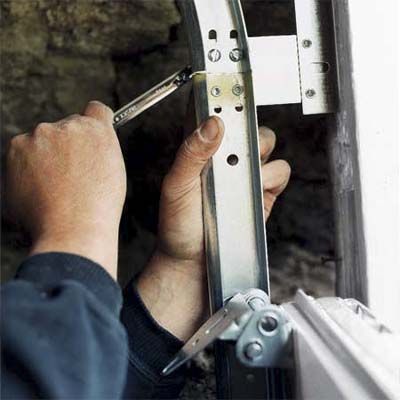
We take diagonal measurements between the two upper tracks to ensure they are parallel and make any necessary adjustments to the track alignment. Once everything is properly aligned, we tighten all the fasteners securely.
Step 5: Add Last Door Section
With the track system in place, we carefully lift the final door section into position and insert the rollers of the top section into the tracks. We then screw on the last set of hinge leaves to connect this section to the one below it.
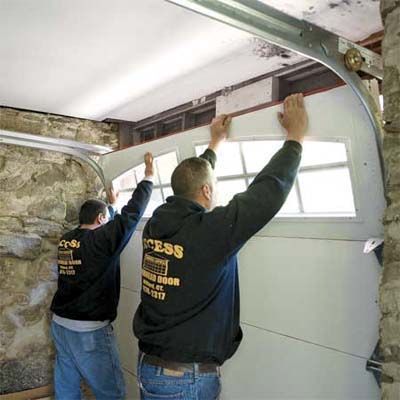
We check that the assembled door slides up and down freely in the tracks and test the door’s movement to verify its operation. Any binding or resistance in the door’s movement is addressed, and we make final adjustments to ensure the door operates correctly from the start.
Step 6: Add the Extension Springs
We start by raising the door to the open position and securing it with C-clamps on the tracks to prevent accidental closure. Each extension spring is then hooked to an open eyebolt threaded to a metal hanger at one end and connected to a pulley wheel at the other end. We thread a steel cable horizontally through the center of each spring to prevent sagging when the door is opened. Finally, we test the springs to confirm that they are working properly.
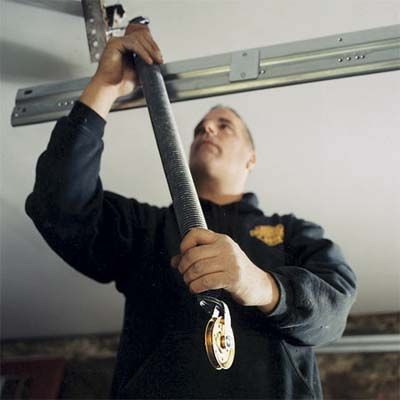
Step 7: Thread the Cable
We hook one end of each steel cable to a bracket at the bottom corner of the door and route the cable up to a sheave attached to the upper track. We loop the cable around the sheave on the spring and hook it to the brackets, anchoring the curved track sections. After removing the C-clamps from the tracks, we adjust the cables to ensure the door slides up and down with consistent force. We make fine adjustments to balance the door, verifying its smooth and easy operation.
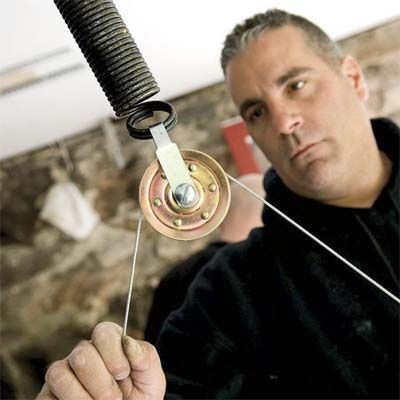
Step 8: Add the Hardware
We add decorative hardware to the door, including mounting the lock on the inside for security. We install decorative handles and hinge-strap hardware on the outside to complete the carriage door look. To guarantee balanced operation, we adjust the spring tension evenly on both sides of the door by relocating hooks on brackets or raising the springs’ eyebolt connections on the hangers.
